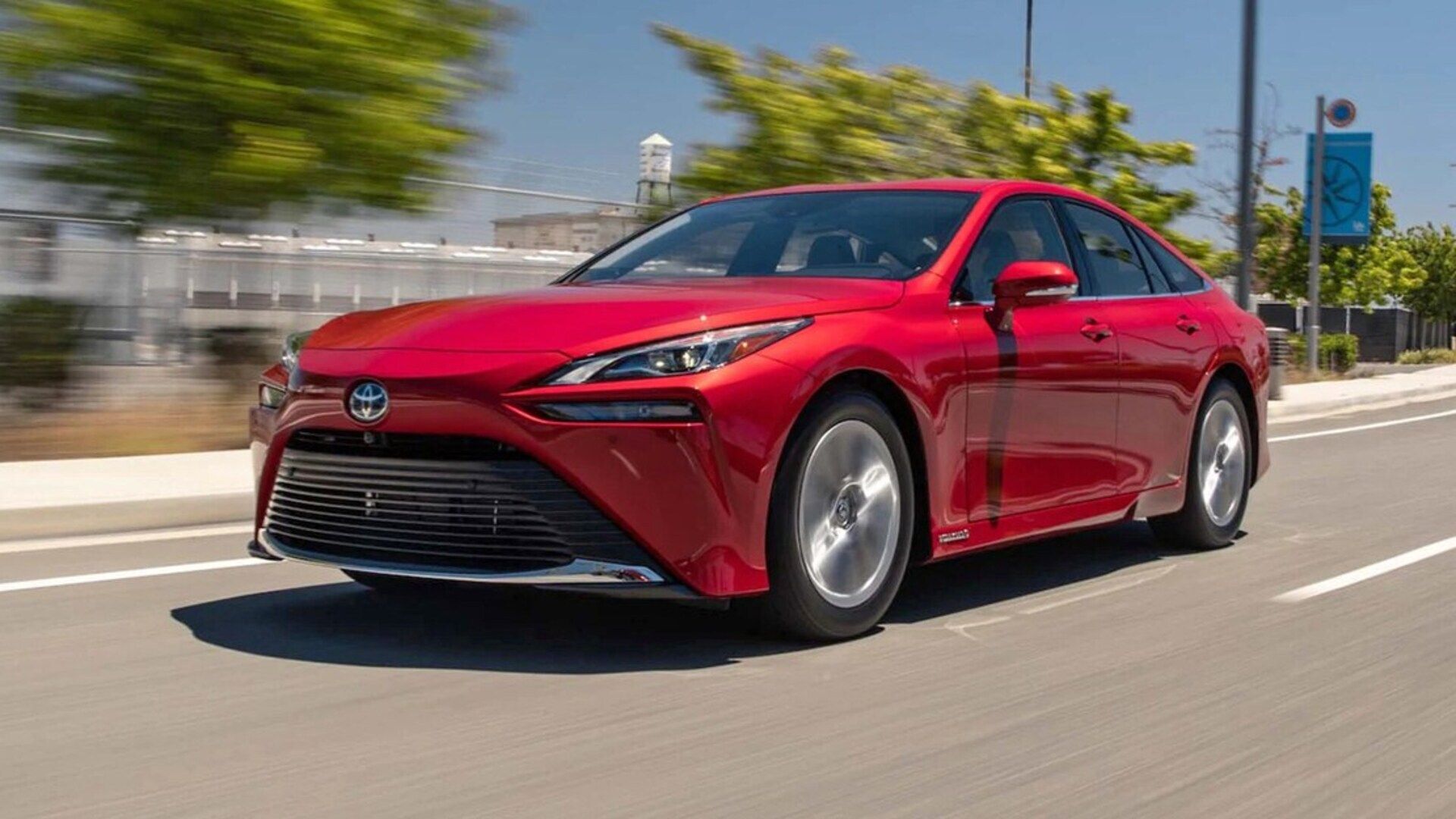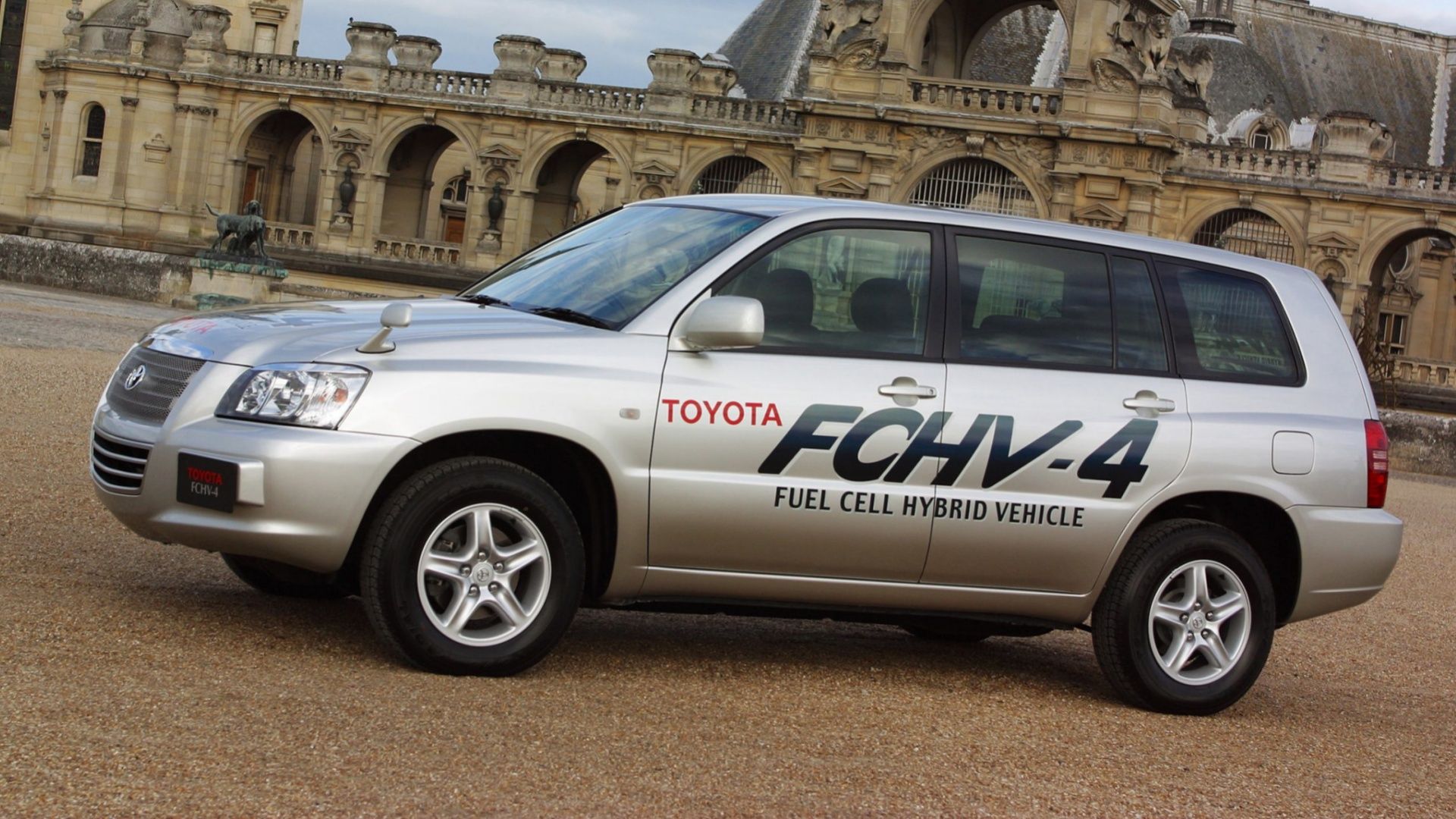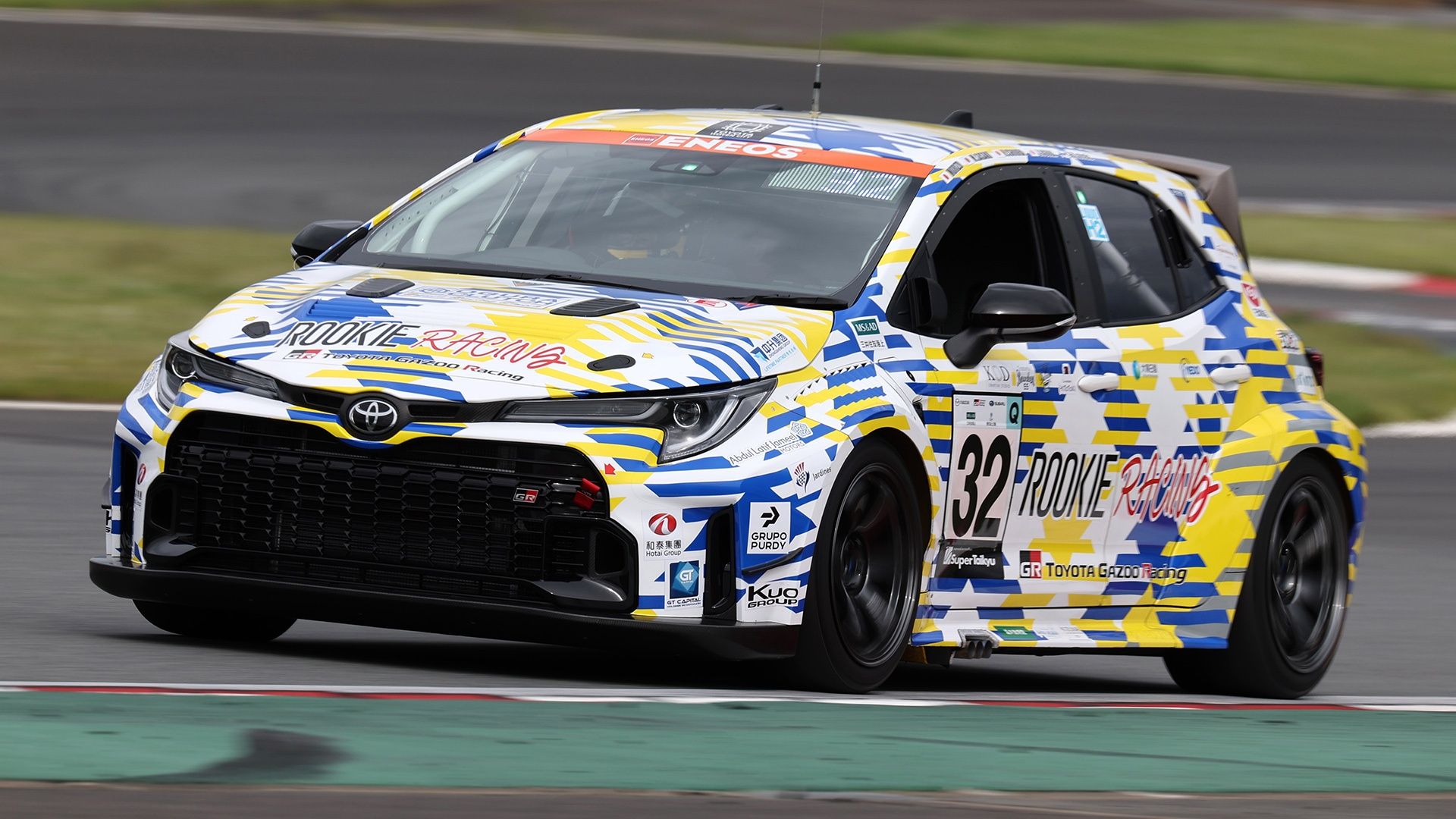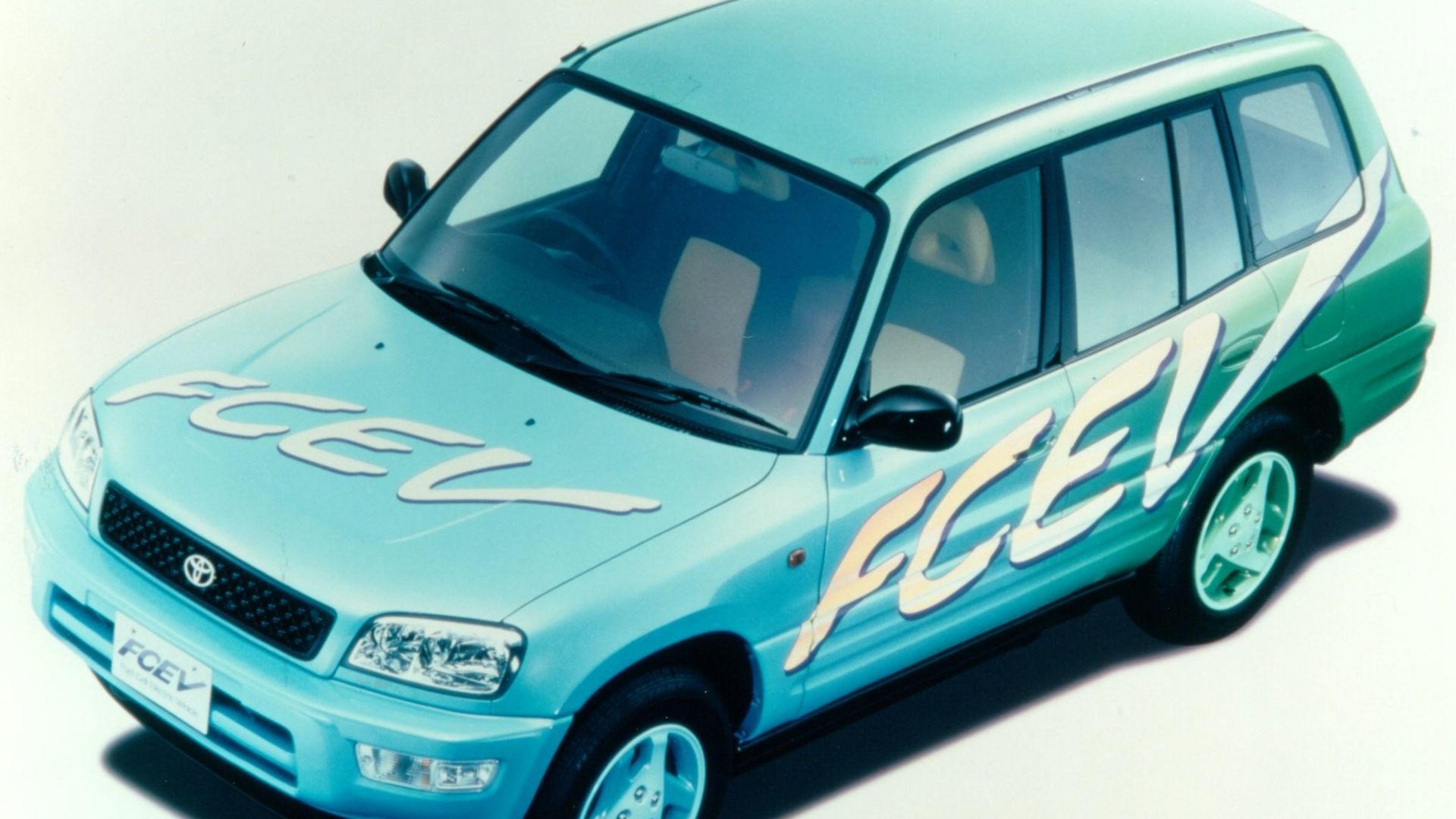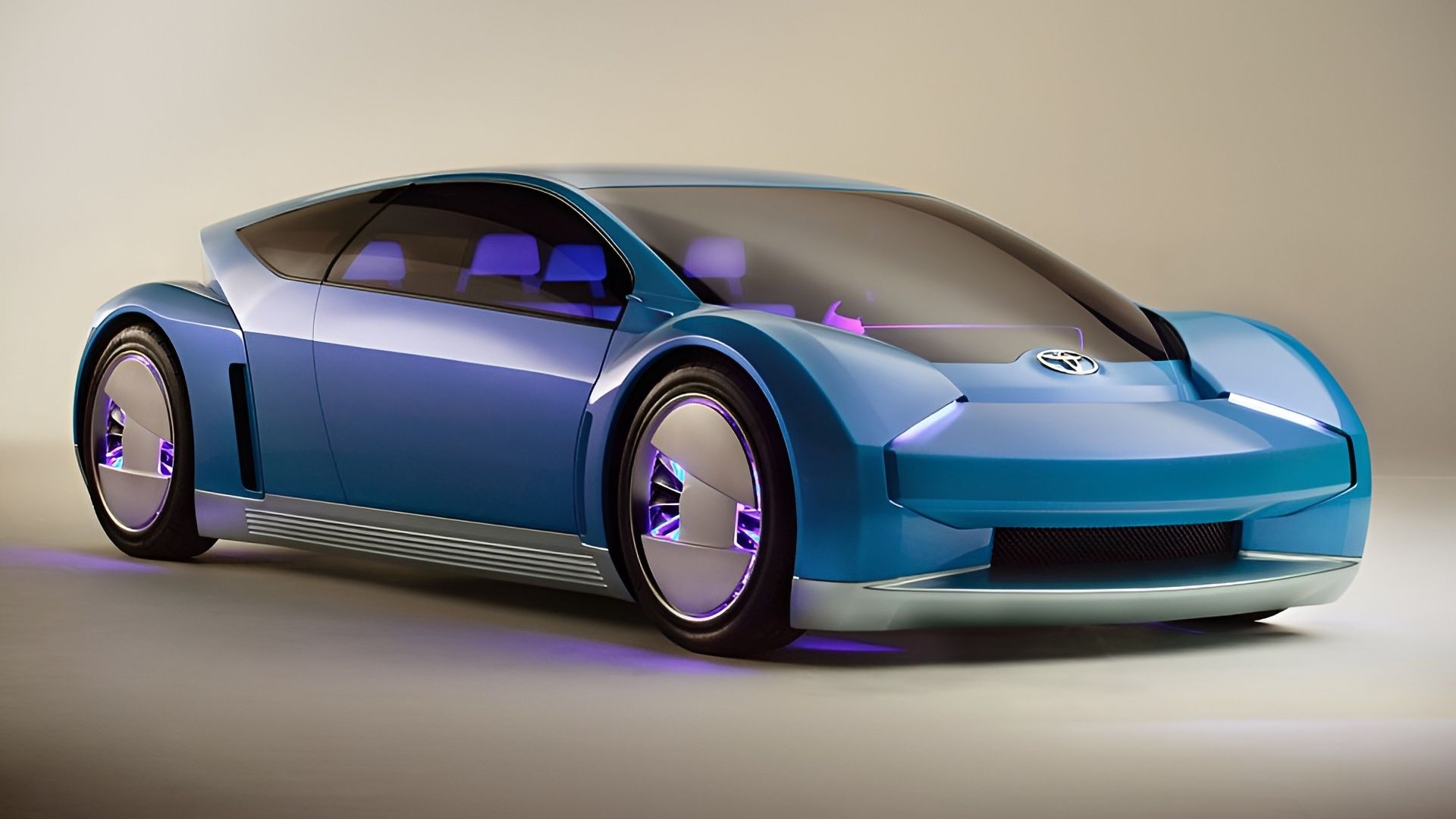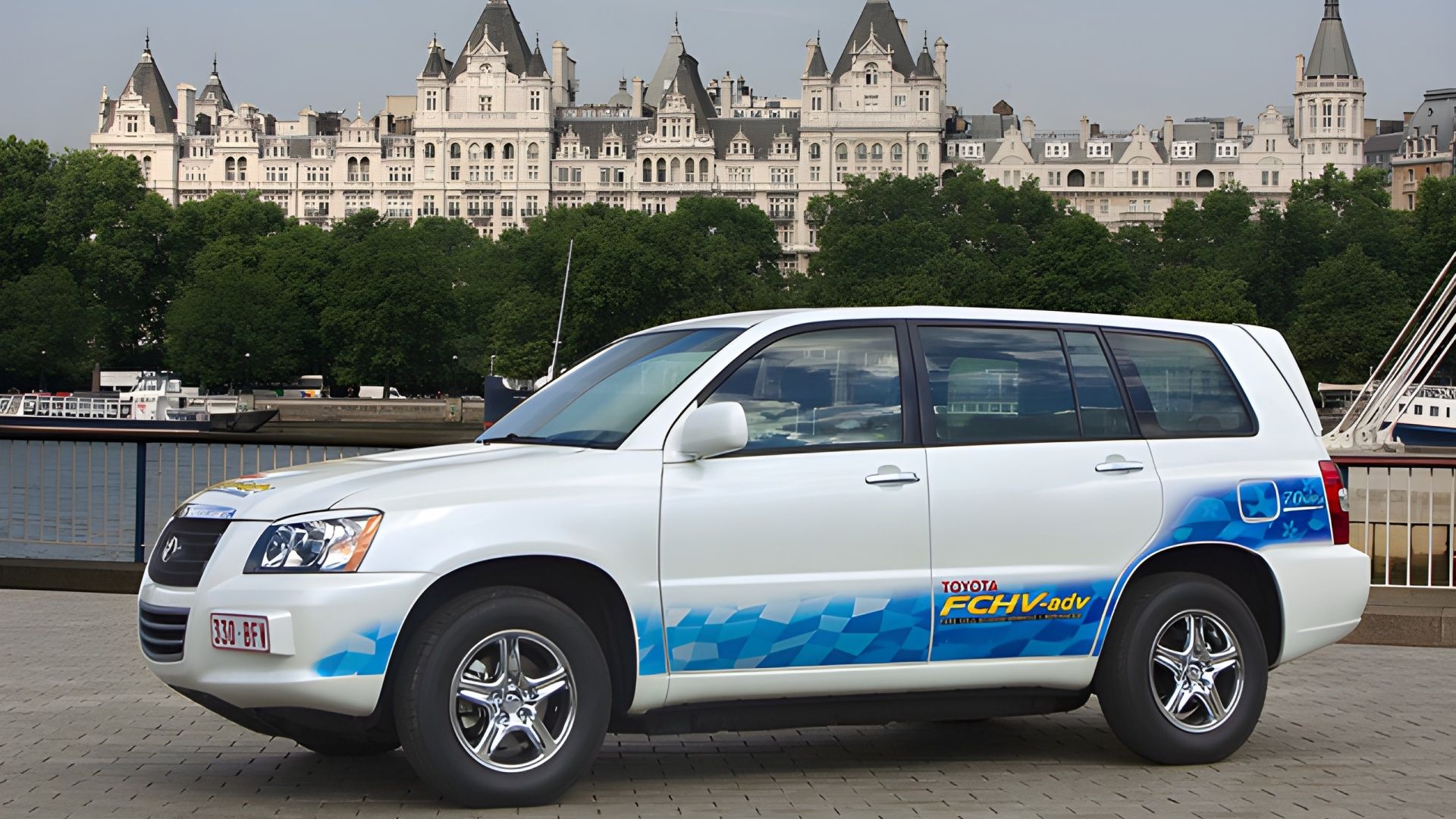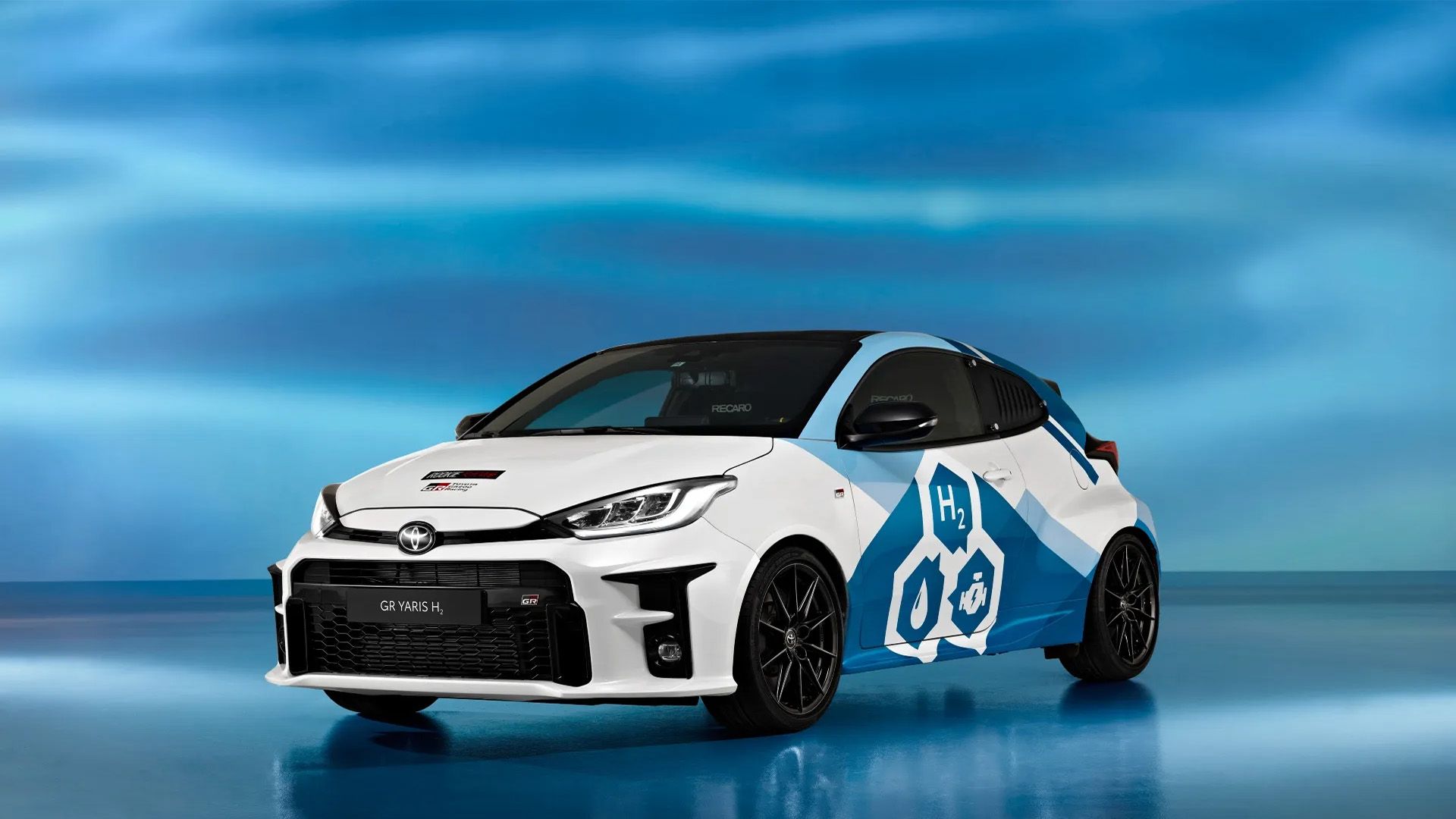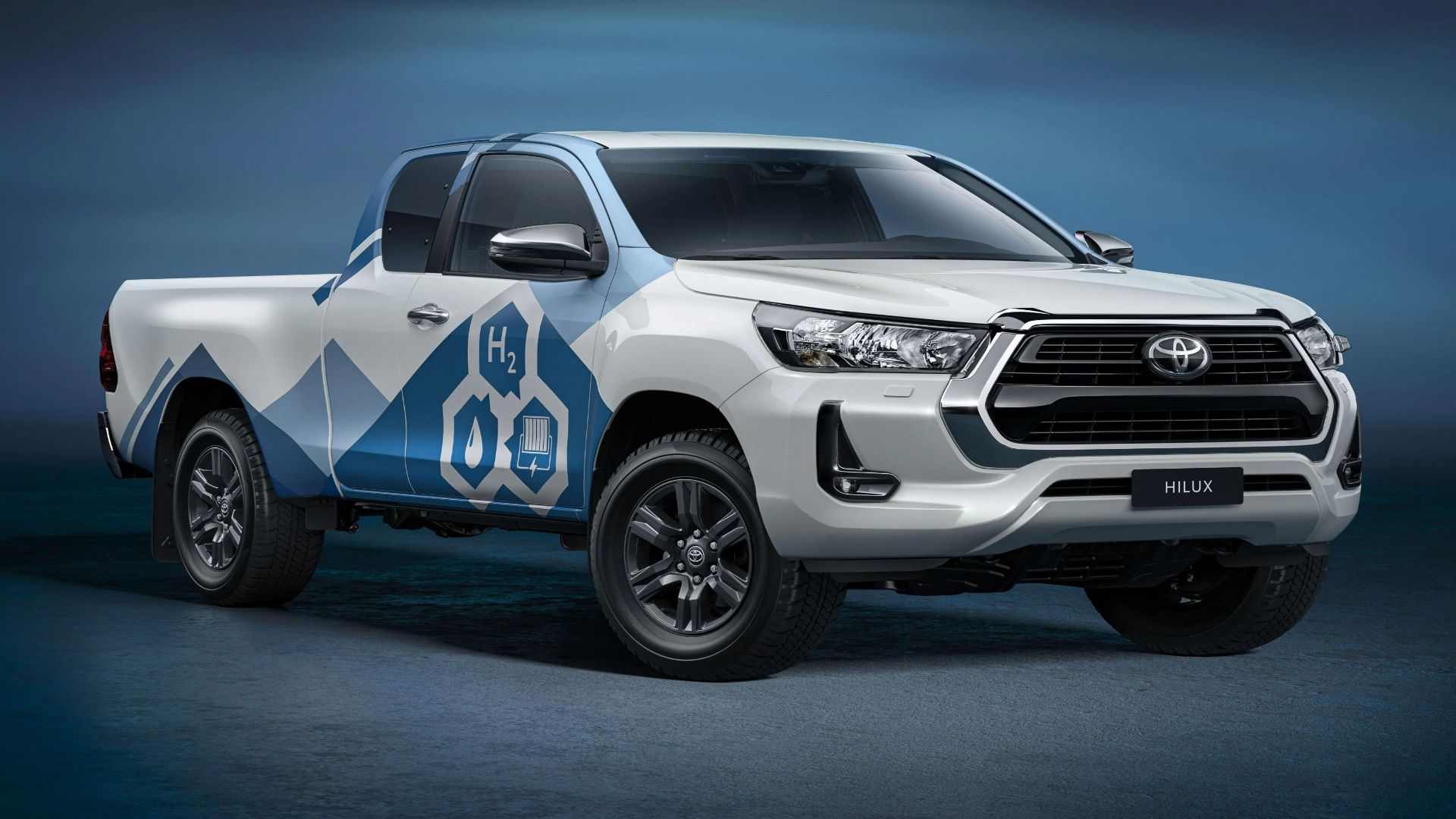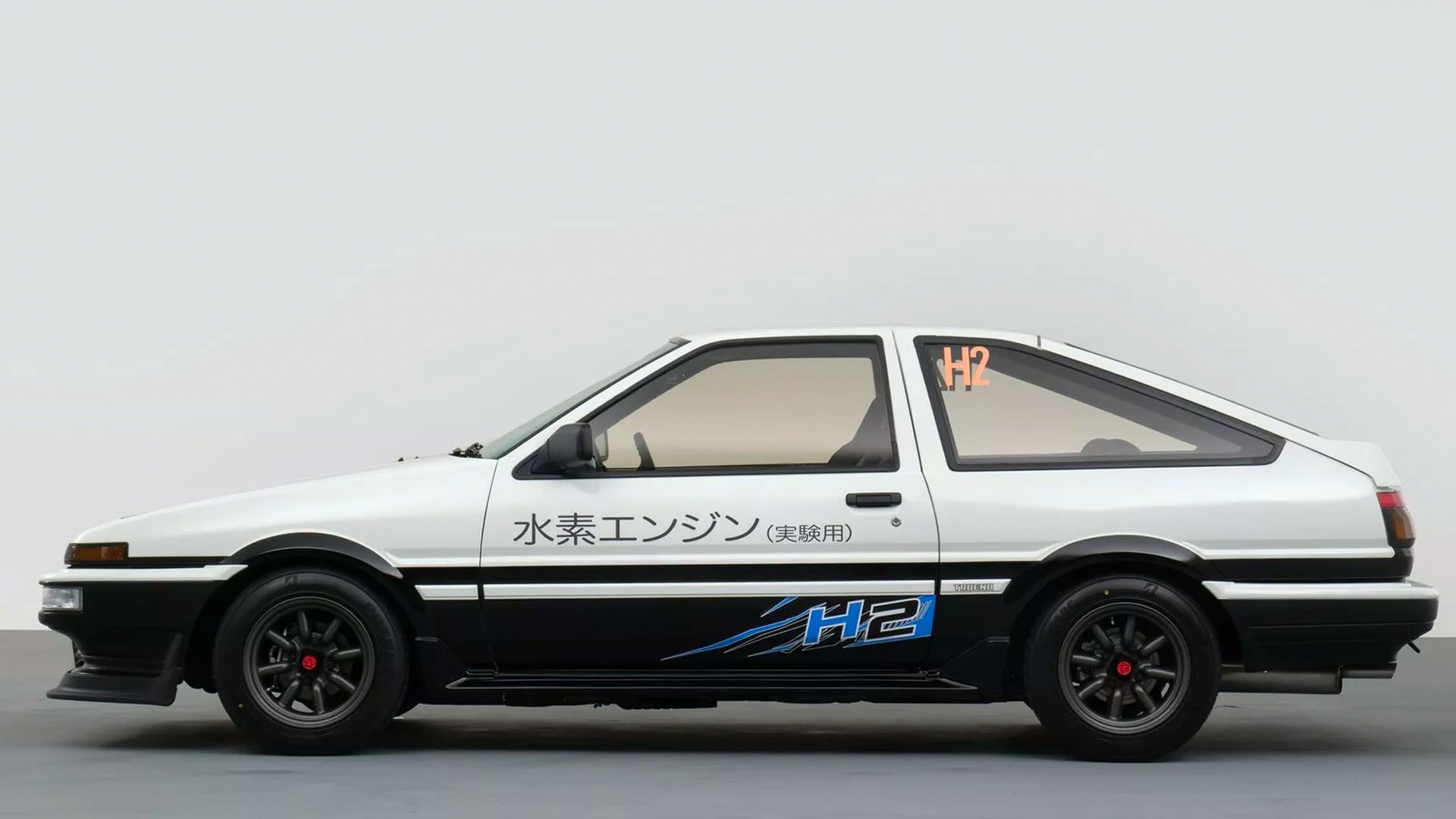[ad_1]
As everyone knows, fossil fuels are going the way of, well, the dinosaur. The future of a6utomotive power is zero-emission. This isn’t just a desire from consumers and automakers, governments around the world are pushing a transition away from petroleum-based power, towards alternative fuel sources.
One of the long-standing alternative fuel options is hydrogen. There are two ways hydrogen can be used as a zero-emission fuel source. The first is in a fuel cell, where the hydrogen powers an electric motor. Then there are hydrogen combustion engines, which use very similar mechanisms to traditional gasoline vehicles, but do not produce any emissions besides water. The basis for fuel cells is about 200 years old, and fuel cells have been used in NASA technology since the 60s.
The first hydrogen-powered car was created in 1966, the GM Electrovan. However, after that, hydrogen lay dormant as a fuel source until the 90s. In 1992, Toyota began a hydrogen program to take the company into the future of fuel technology. By 1996, they had a working fuel cell vehicle, and had one on the roads by 2002. They’ve been making hydrogen cars ever since. Here are ten of the most interesting examples from Toyota’s proud hydrogen history.
In order to give you the most up-to-date and accurate information possible, the data used to compile this article was sourced from various Toyota press releases.
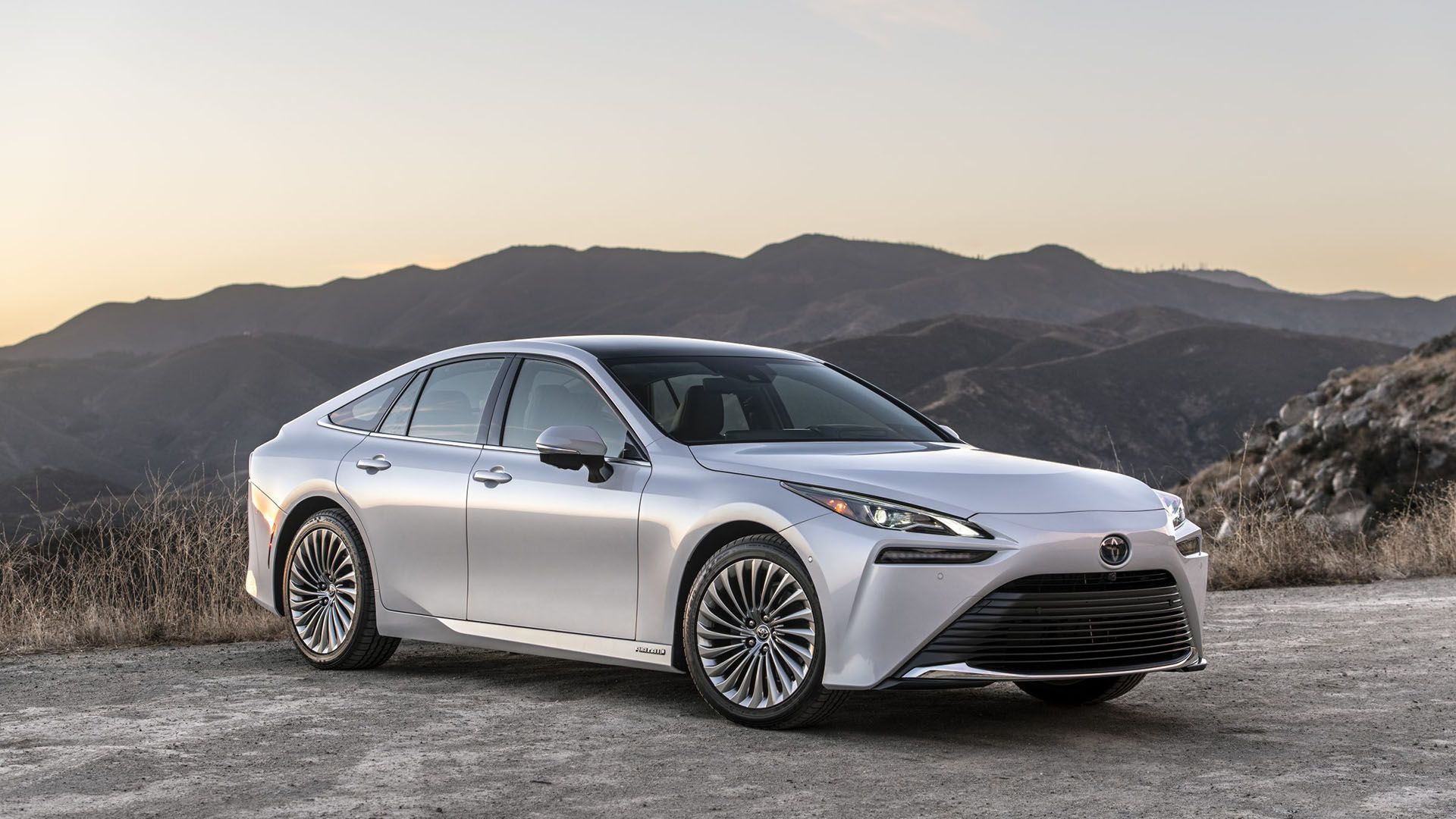
Everything You Need To Know About The Hydrogen Powered Toyota Mirai
The Toyota Mirai is leading the charge in offering a hydrogen alternative to an electric car. Here’s all you need to know.
1 Toyota Mirai
The Toyota Mirai is the modern mainstay of hydrogen motor vehicles. It debuted in 2014, and has now been on the roads for a decade with several iterations. The Mirai isn’t just Toyota’s biggest name in hydrogen, it backs it up by being a record-holding hydrogen vehicle. It has the all-time longest trip on a single tank of hydrogen.
The Standard-bearer Hydrogen Vehicle For Toyota
Arguably the best thing about the Mirai is that is just another car. It has no performance issues, it’s reliable, it’s as fast and quick as any other mid-range sedan, and it can go about as long on a single tank as most ICE sedans as well. Allow us to illustrate the point with the Mirai’s performance specs.
Toyota Mirai Specs
|
Engine |
Fuel Cell Single Electric Motor |
|
Transmission |
Automatic Single Speed |
|
Horsepower |
182 Horsepower |
|
Torque |
300 LB/FT |
|
Driveline |
Rear-Wheel Drive |
|
0-60 MPH |
9.1 Seconds |
|
Top Speed |
106 MPH |
|
Range |
402 Miles |
(Data collected from Toyota)
Toyota believes the Mirai can continue to be the highest profile hydrogen vehicle in the world, regardless of sales. They just need a little more support for hydrogen infrastructure.
2 Toyota FHCV-4
The FCHV-4, as the name implies, was the fourth car in Toyota’s hydrogen fuel cell line. It was based on the Toyota Highlander, using the size of the SUV to house the slightly more primitive hydrogen fuel system. Toyota really proved its commitment to hydrogen with the FCHV-4, as it was the first hydrogen car to be road-legal in Japan.
Toyota’s First Hydrogen Vehicle For Consumers
The FCHV-4 went to market in 2002. In the U.S. it was only available for lease. As Toyota typically does, it tried to make the FCHV-4 comparable to most EVs of the era. The FCHV-4 had a backup battery as well, making it a hybrid. Here’s how its performance stacked up.
Toyota FHCV-4 Specs
|
Engine |
Fuel Cell Single Electric Motor |
|
Transmission |
Automatic Single Speed |
|
Horsepower |
120 Horsepower |
|
Torque |
191 LB/FT |
|
Driveline |
Front-Wheel Drive |
|
Top Speed |
94 MPH |
|
Range |
155 Miles |
(Data collected from Toyota)
This was the first hydrogen SUV and along with Honda’s FCX, was the first roadgoing hydrogen vehicle available to consumers in the U.S. and Japan. Unfortunately, the limited hydrogen infrastructure kept it from being a widespread green vehicle. The FCHV-4 was a landmark piece of work by Toyota that was light years ahead of its time.
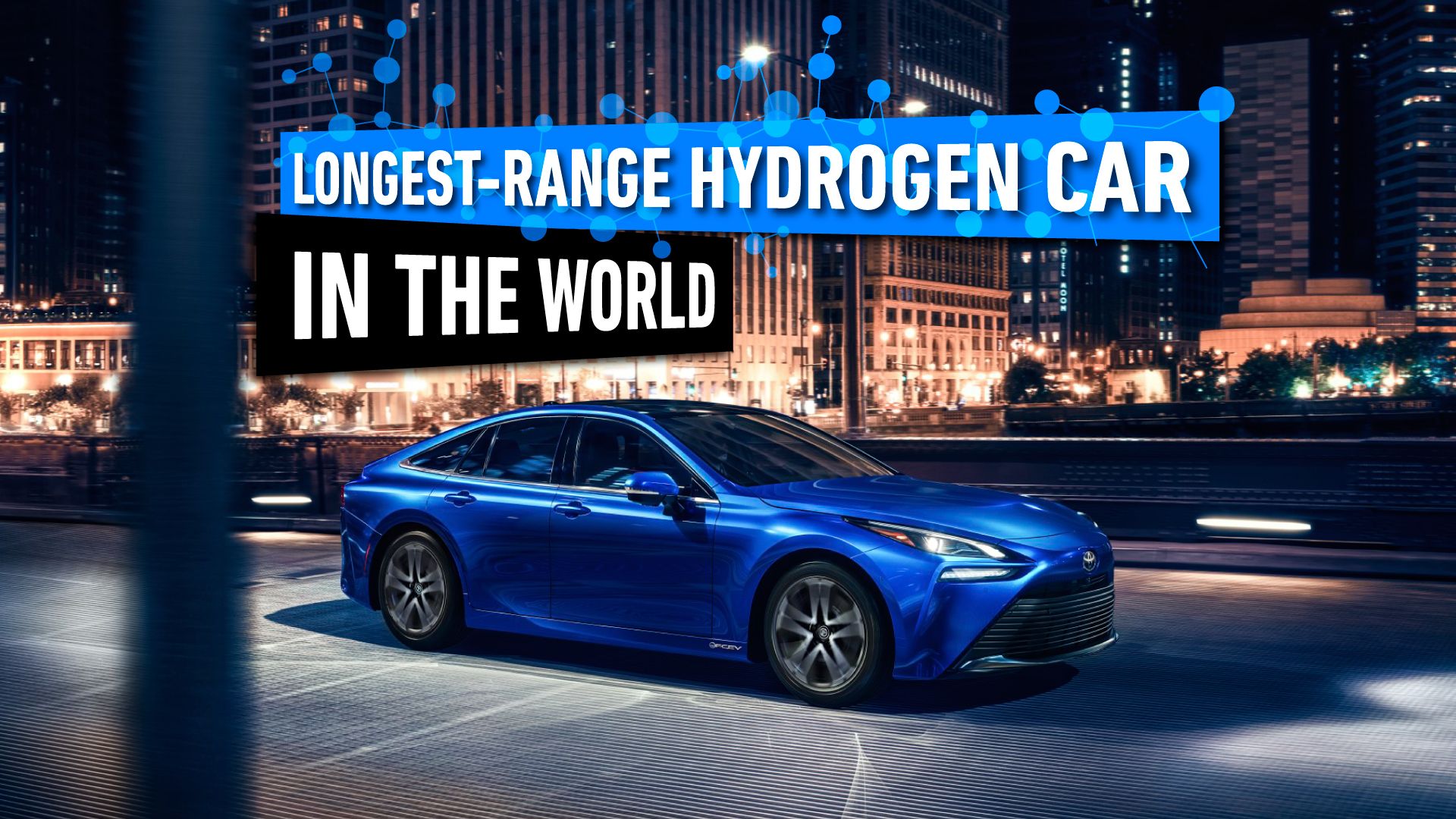
The Longest-Range Hydrogen Car In The World
Hydrogen cars are here to compete with EVs in a green future. This is what we know about the limits of their range and which car tops the list.
3 Toyota GR Corolla H2
Toyota believes that testing its technologies in motorsport gives them a unique perspective on how they will work on the road. Toyota believes cars should be good to drive first, before any other considerations, and testing through racing will ensure this. With hydrogen, it is no different. The GR Corolla H2 is a hydrogen combustion race car, no tricks or gimmicks here.
A Hydrogen Car Made For Endurance Racing
- The GR Corolla H2 is a real race car. It has competed with the Rookie racing team for the last year.
- It made its debut at the 2023 Super Taikyu Fuji 24 Hours race.
- The GR Corolla H2 runs on liquid hydrogen rather than the standard gaseous hydrogen.
- Hydrogen combustion has an advantage in endurance races; it can hold larger volumes of fuel compared to gasoline and diesel, and run at a similar efficiency. This means fewer refueling stops.
One of the main worries with eco-cars is that they will not be able to perform like gasoline-powered ones. While electric vehicles have long gotten over this hump with famous entries into their canon like Rimac, Toyota is dedicated to breaking this stigma for hydrogen. Its H2 race division will continue to push the boundaries of hydrogen performance.
4 Toyota FCEV-1
This is the genesis of Toyota’s hydrogen line. This is where it all began. Toyota started in 1992 and was very quickly able to develop a working hydrogen-powered vehicle. The FCEV.
Toyota’s Original Hydrogen-Powered Vehicle
- The FCEV-1 stood for “Fuel Cell Electric Vehicle”.
- It was based on the Toyota RAV4, a small SUV, an idea very ahead of its time, as many eco-cars of today are crossovers and small SUVs.
- It debuted in 1996, leading a parade in Osaka, Japan.
- By 1997 Toyota displayed an updated model for the Tokyo Motor show.
While the FCEV never saw anything close to a consumer, it still proved the concept that Toyota had developed a working hydrogen fuel cell. We don’t know its top speed, its range, its horsepower, but it doesn’t matter. It wasn’t made to put up numbers, it was made to show the world what Toyota could do.
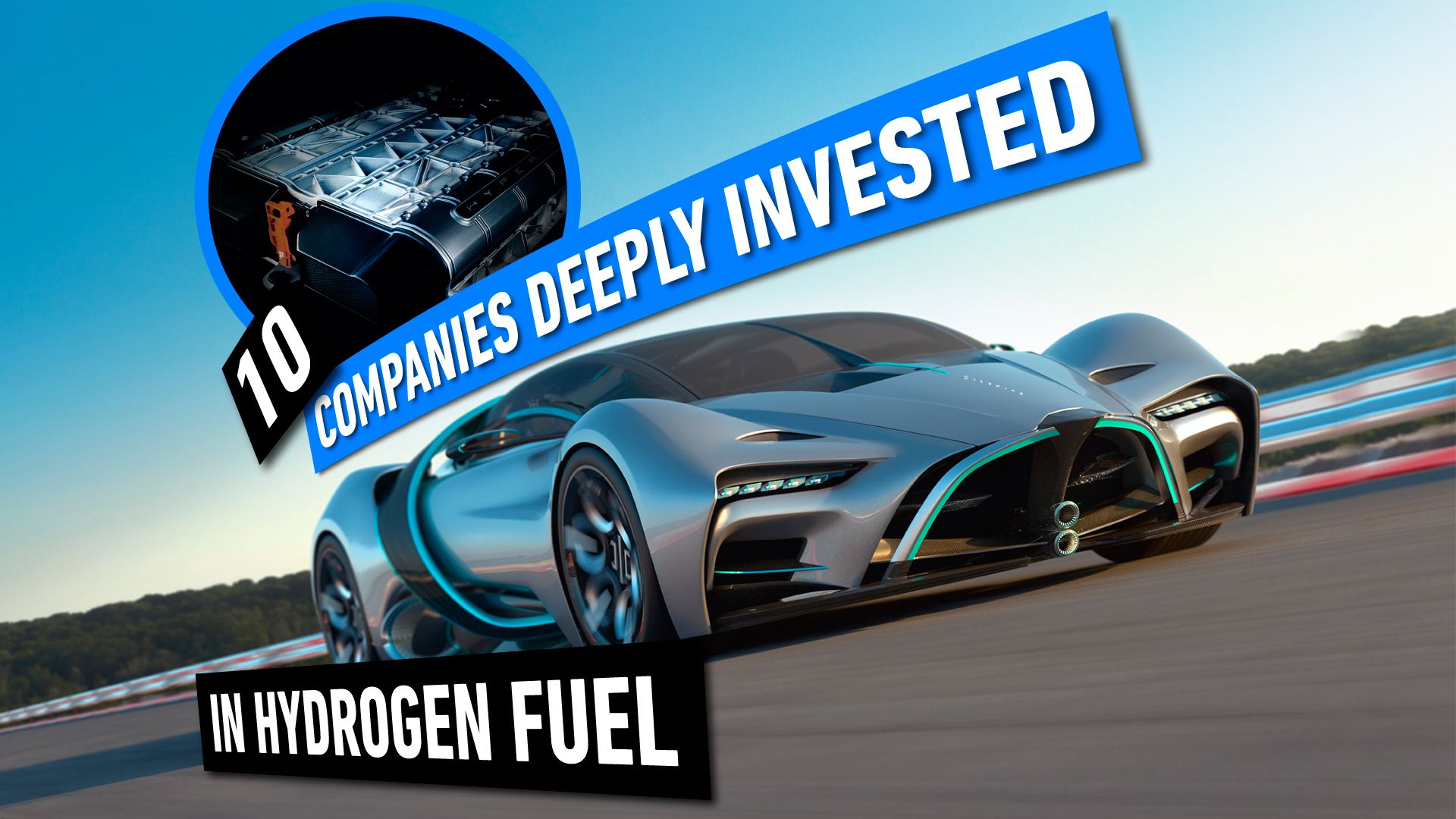
10 Companies Deeply Invested In Hydrogen Fuel Cell Systems
Hydrogen fuel cells are rapidly becoming a larger piece of an electrified future, and these 10 companies are at the front of it.
5 Toyota Fine-S
Toyota focused on making its early hydrogen cars adaptations of existing models. But, when it came to concepts they took a more creative approach. The “Fine” line produced several concepts based on hydrogen-fueled powertrains, but the S was the sportiest.
This Hydrogen-Hybrid Concept Debuted At The North American International Auto Show
- The 2003 concept was designed to show a potential future for hydrogen with styling to match the sci-fi fuel technology.
- The design featured a prescient powertrain, with four hydrogen-powered electric motors powering each wheel, much like modern sports EVs.
- Toyota put the hydrogen system in the floor of the car to give it a low center of gravity and roofline, creating a sleek look.
- The car comfortably sat four people because of the space saved in relation to an internal combustion engine.
The Fine-S took the futuristic side of hydrogen and ran with it. While, unfortunately, designs like this have yet to come from Toyota, we’re holding out hope that it could eventually produce something like this.
6 Toyota FCHV-adv
The FCHV was Toyota’s hydrogen flagship from 2002-2013. This was where Toyota finally got to tune its hydrogen vehicles for the road. By the end of the line, they got pretty darn good, too.
The Final Version Of Toyota’s Highlander Based Fuel Cell Car
The Adv was the ultimate hydrogen vehicle of the early 2000s, the culmination of Toyota’s hydrogen development. Available from 2010-13, the Adv was a limited release from Toyota. Here are some specs. Compare them to the FCHV-4 earlier in the list and see how far Toyota came in just a few years.
Toyota FCHV-adv Specs
|
Engine |
Fuel Cell Single Electric Motor |
|
Transmission |
Automatic Single Speed |
|
Horsepower |
121 Horsepower |
|
Torque |
191 LB/FT |
|
Driveline |
Front-Wheel Drive |
|
Top Speed |
96 MPH |
|
Range |
516 Miles |
(Data collected from Toyota)
The main improvement here was in the range, which Toyota more than tripled. They didn’t tamper with the performance all that much, because the FCHV was not about performance, it was about making hydrogen viable for consumers. At a range better than most EVs from 10 years later, and more than the Mirai currently has, this car was far ahead of its time.
3:39

Here’s What Makes Toyota’s Water-cooled Hydrogen Combustion Engine Unique
Toyota’s water-cooled hydrogen engine tackles heat challenges, aiming for cleaner, high-performance vehicles, and here’s what you need to know.
7 Toyota GR Yaris H2
The Corolla H2 is not Toyota’s only hydrogen-powered racecar. It’s also developed one based on the Toyota Yaris. The crucible of motorsport will continue to develop Toyota’s hydrogen technology.
Toyota Built A Hydrogen Combustion Rally Racer
- The Yaris H2 uses the same hydrogen combustion engine as the Corolla H2, a 1.6 liter inline three-cylinder
- It has yet to compete in an actual race, but it has done a test run at the Belgian stage of the World Rally Championship
- The Yaris H2 has been driven by the president of Toyota, Akio Toyoda, through the rally course, as well as famous Mr. Bean actor, Rowan Aktinson, as a promotional stunt.
Toyota should eventually get the Yaris H2 on the track and racing. It hopes that in the future people will recognize the effort to maintain performance while not sacrificing ecological stability with their early hydrogen racers.
8 Toyota Hilux H2
The Toyota Hilux is a famously unkillable car. Top Gear turned one into a pancake, and the engine still turned over after taking a dip in the ocean. The truck famously even had a war named after it, as it was that effective in guerrilla warfare. Of course, it’s a no-brainer for Toyota to combine this legendary reliability with their hydrogen fuel cell.
The Ultimate Pickup Goes Zero-Emission
- Toyota revealed the prototype in September 2023.
- The expected range is 600 KM or about 375 miles, about 40 more than the cybertruck, with no recharge downtime.
- The fuel system and fuel-cell will be based on those in the Mirai, which is a good thing, as that platform is tried and true from the last decade of work on the road.
No release date has been stated by Toyota yet. It’s unclear if this car will be released in the U.S., as the Hilux is not currently offered in the States. However, California is the epicenter of Toyota’s hydrogen world in the west, so it seems unlikely they wouldn’t release a pickup here.
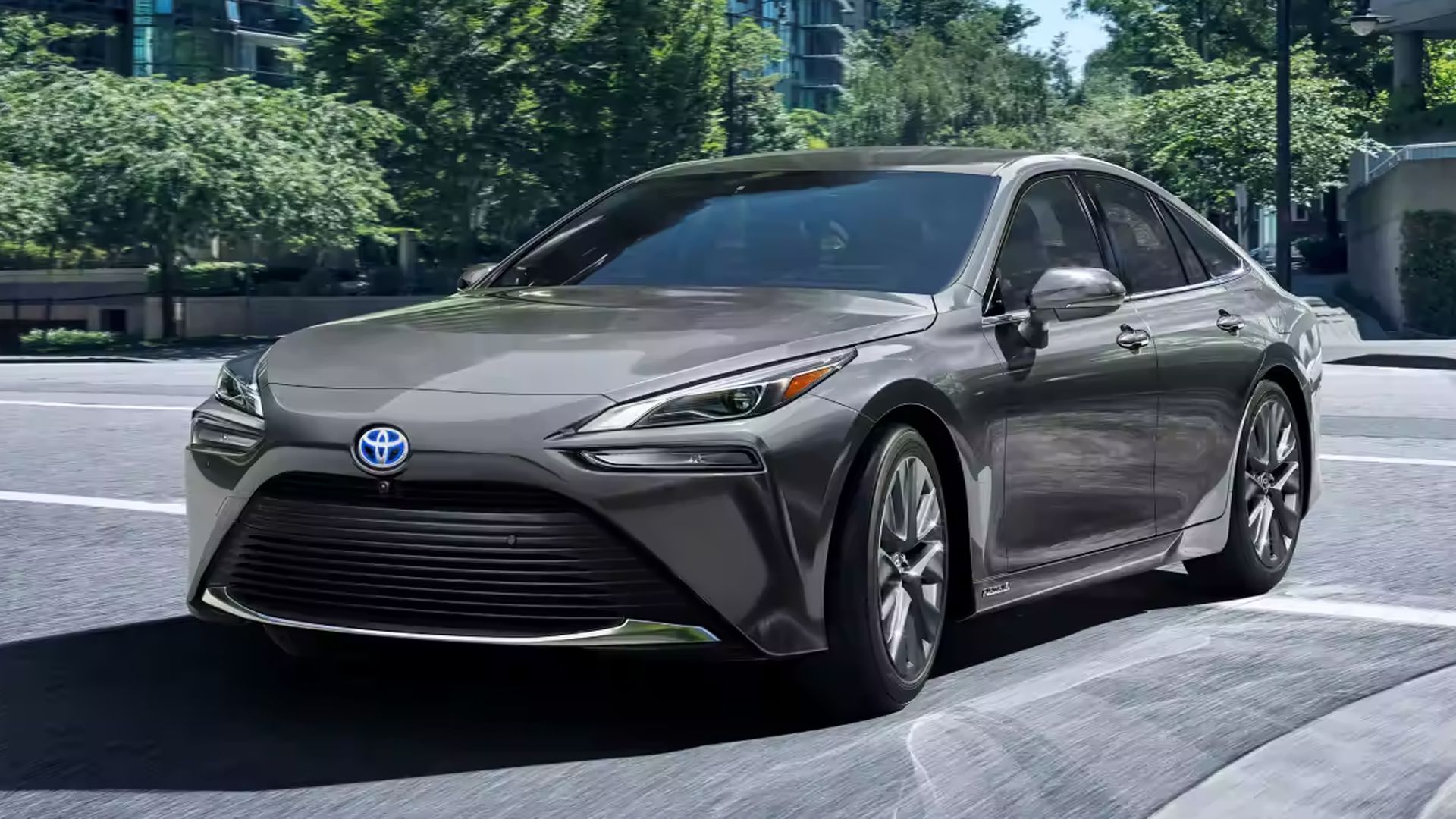
Here’s How Much It Costs To Refill A Hydrogen-powered Toyota Mirai
The Toyota Mirai is offered with $15,000 worth of free hydrogen for six years. This is how much you’ll pay to refuel once that runs out.
9 Toyota Crown FCEV
The Toyota Crown is a luxury sedan from Toyota. It actually is the longest-running model name in the entire Toyota brand. It was even the first Toyota car offered in the U.S. Now, there’s a new one.
The New Crown Will Have A Hydrogen Option
- It will also have a hybrid option, but no traditional gasoline edition.
- This will be a rear-wheel drive hydrogen option, like the Mirai.
- The Crown FCEV will have an 820 KM range (over 500 miles).
- The new crown will have a completely new exterior and interior design with a new Crown logo and a massive set of LED screens, projecting its luxury status.
The upcoming Crown will take hydrogen out of the purely eco-sedan range and into the luxury world. Toyota is committed to making hydrogen cars at every level, from the simple Mirai, to its race cars, and now a luxury liner in the Crown.
10 Toyota AE86 Hydrogen
The AE86 is a classic liftback Toyota. It is a rare model that is valuable in the secondhand market, beloved by collectors and JDM fans. Toyota knows of its legendary status, and used it to promote their hydrogen fuel systems.
This Corolla Fastback Has A Hydrogen Restomod
- Toyota built a one-off hydrogen version of the AE86 in 2023.
- It also built an electric version, but that only has 46 horsepower.
- The hydrogen version still has its four-cylinder engine modified to accept hydrogen fuel.
- No official specs have been released, but it’s safe to say it outputs a similar number to its original 128 horses.
Hydrogen cars attract a lot of retrofuture designs, for whatever reason. In the case of the AE86, the enduring popularity of the racing anime “Initial D”, which heavily featured the Toyota, may have helped inspire this. Whatever the reason, we’d love to see more automakers update their old cars with new technology.
Toyota’s dedication to hydrogen is unwavering. We think that a fuel source that works like gasoline on the fill-up with none of the environmental drawbacks is a great way toward a green future, and we wish Toyota all the success in the world with its hydrogen efforts.
[ad_2]
Source link
